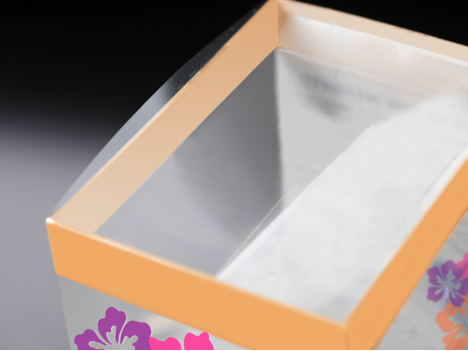
While certain terms in the business world carry a universal meaning or definition, others are industry-specific. When multiple teams from across various industries consult on a project as important as custom packaging, the potential of confusion and miscommunication may happen if you’re not using the terminology correctly. It’s important to understand the key terminology and vernacular used by industry professionals.

Printing and Packaging Vernacular
Rarely is printing and packaging a hands-off activity. In most situations, companies spend a lot of time directly communicating with designers, printers, and production managers. To facilitate communication with your packaging solutions provider, here are some helpful industry terms to know:

- Hot foil stamping. A process accomplished on a foil stamping machine that uses a metal plate that has been engraved with an image of the desired design required for the particular application. The plate strikes a roll of foil film, which causes the foil to adhere to the plate. The metal plate then strikes the substrate that is to be imprinted and transfers the foil onto the area of the document requiring the metallic effect. The result is a document that has a highly reflective image with a bright and dense metallic appearance.
- Cold foil stamping. A process that can be done in-line on a press. Using a standard printing plate, an image is printed onto a substrate with the use of a UV-curable cold foil adhesive. A UV dryer then activates the adhesive. The extracted foil is affixed to the printed adhesive and an image is created. Foil that does not adhere to the adhesive is removed.
- Clear plastic folding carton. These cartons fold up to create packaging that allows customers to view all or part of the product inside. Clear plastic folding cartons are useful for new products and items that aren’t easily rendered on the packaging.
- Embossing. This refers to a technique used to create a raised surface on a specific portion of a product’s packaging. It is designed to draw attention to certain features and differentiate the texture.
- Film laminating. When designing point-of-sale displays or high-quality packaging, film laminating is used to produce a surface that is both durable and appealing. Low-luster finishes are used to produce scratch and glare resistant surfaces, gloss can enhance the feel, and textured is useful for adding another dimension to your display, package or direct mail piece.
- Humidity chamber testing. This form of testing simulates environmental situations in which products are stored in areas with high humidity. The results can be used to establish packaging that is conducive to particular elements.
- Lenticular graphics. Widely used for DVD/Blu-Ray Disc packaging, lenticular graphics are used to produce printed three-dimensional graphics that change when viewed from different angles.
- Primary packaging. Primary packaging refers to the actual material, case, bottle, box, carton, or packaging for the product itself. Examples would be a shampoo bottle, bag for potato chips, dispenser for hand soap, etc. Some primary packages do not use any additional packaging (secondary packaging) and go right on the store shelf.
- Secondary packaging. Secondary packaging refers to any additional packaging that holds the product itself or the primary packaging. Secondary packaging tends to be structural, folding carton style yet certainly can take many shapes.
- Substrate. A substrate is the actual material that designs and logos are printed on. Types of substrates include plastics like polyester and polypropylene, papers like foil board and metalized paper, and exotic materials like wood veneers and canvas.
Even for savvy industry professionals, the terminology can sometimes seem confusing. At JohnsByrne, it is our goal to make the printing and packaging portion of your business as simple and streamlined as possible. Our single-source business model allows us to be nimble and flexible, as we constantly push the limits on cutting-edge packaging.

More Resources
Related Posts
When it comes to creating standout packaging, the folding and gluing process is the unsung hero that transforms flat, printed materials into eye-catching, functional packages. … Fast 5 Facts: Folding and Gluing: Bringing Packaging to Life!
In today’s competitive market, packaging does more than just protect a product; it tells a story, engages the senses, and leaves a lasting impression on … 20 Premium Packaging Finishes: A Guide to Elevating Your Brand Experience
This is simple: it’s not just a box. Every product deserves packaging that is both practical and exceptionally appealing. It should be structurally conceived so … Custom Product Packaging Solutions for Brand Loyalty and Preference
